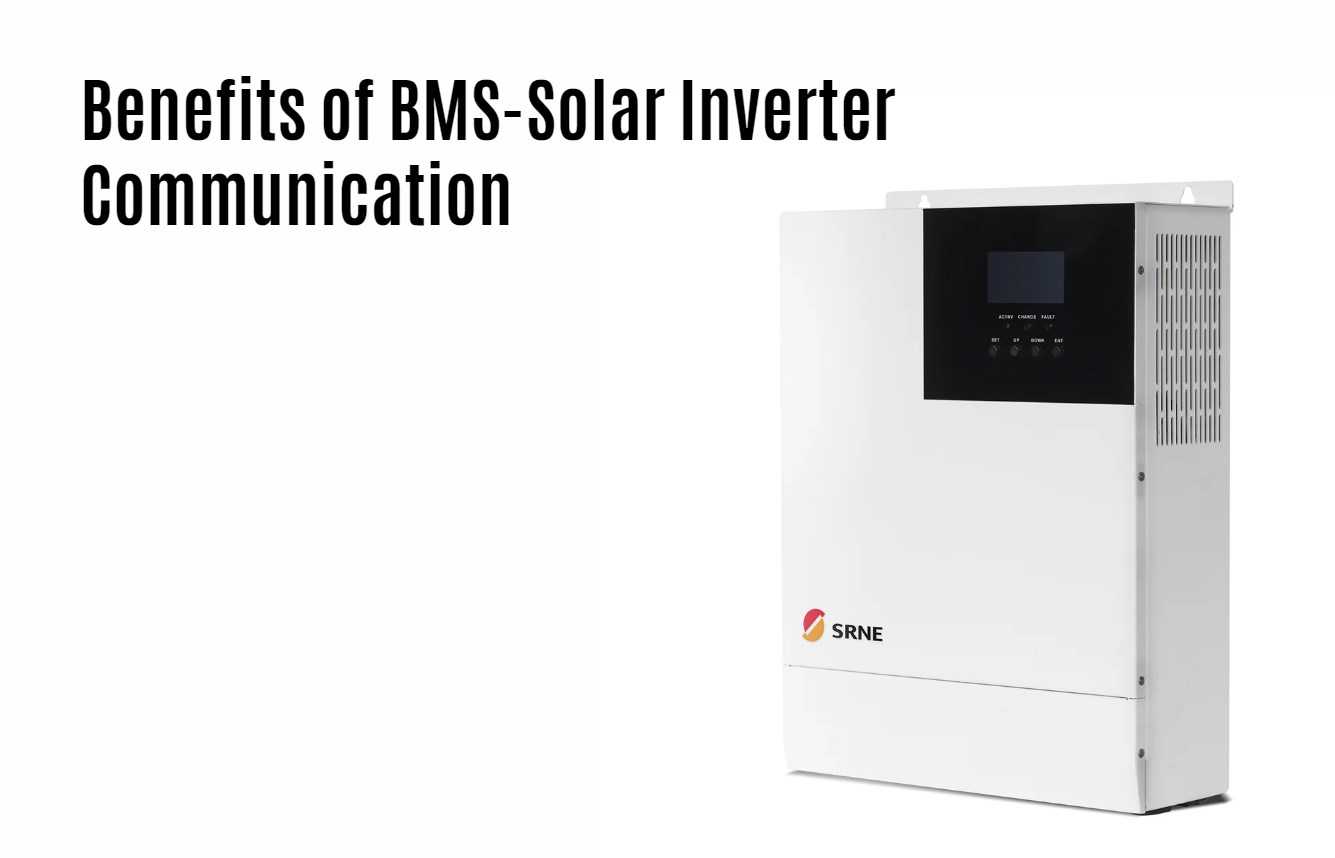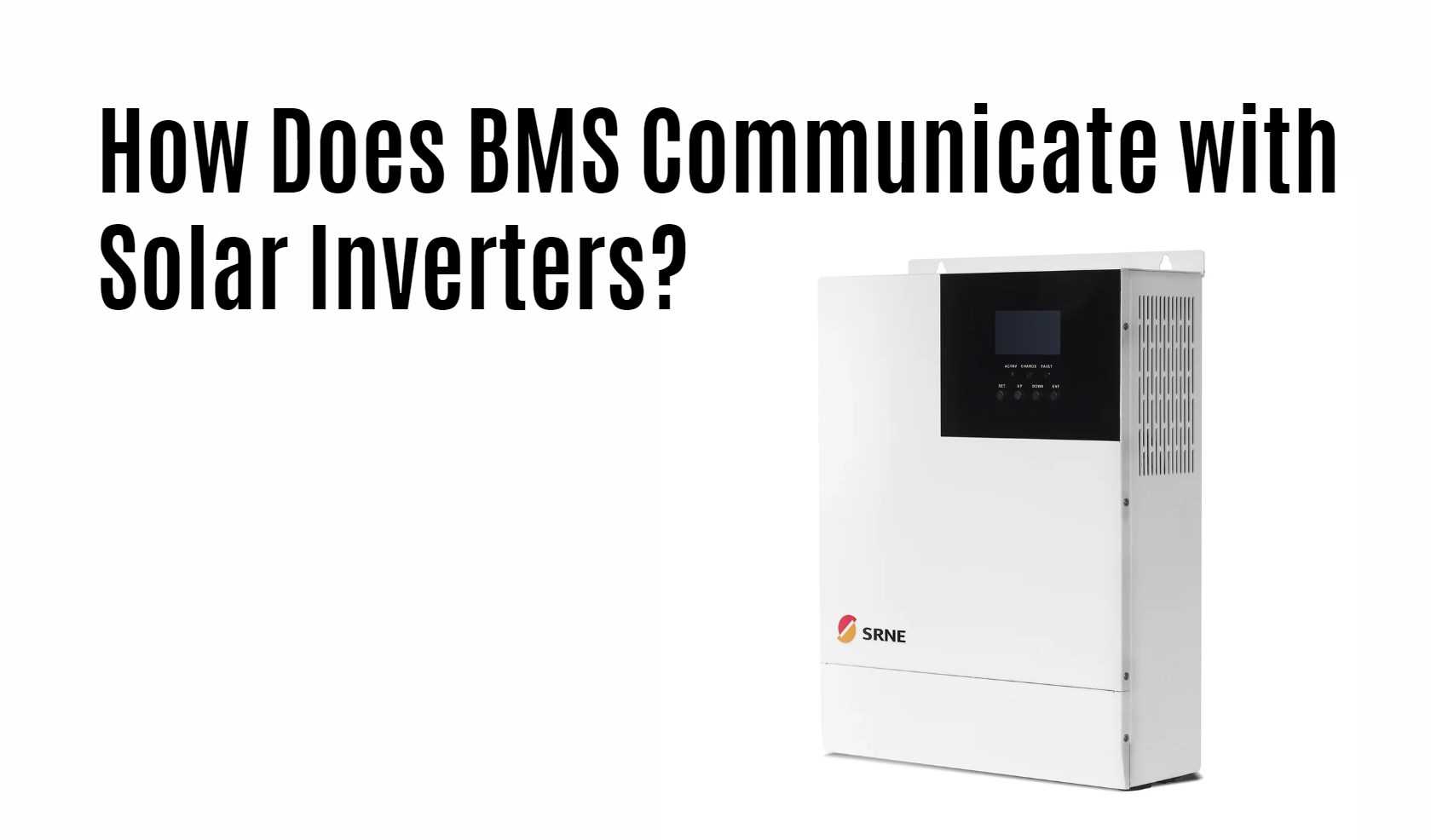In the realm of renewable energy, the integration of Battery Management Systems (BMS) with solar inverters is crucial for optimizing performance and ensuring the longevity of battery storage systems. This article will explore how BMS communicates with solar inverters, the protocols involved, and the benefits of this communication for energy management.
Understanding Battery Management Systems (BMS)
A Battery Management System is an electronic system that manages a rechargeable battery (or battery pack). The primary functions of a BMS include:
- Monitoring: Keeping track of the state of charge (SoC), state of health (SoH), and temperature of each cell in the battery pack.
- Balancing: Ensuring that all cells within the battery pack are charged and discharged evenly to prolong battery life.
- Protection: Safeguarding against overcharging, over-discharging, and thermal runaway.
The Role of Solar Inverters
Solar inverters are devices that convert direct current (DC) generated by solar panels into alternating current (AC) for use in homes and businesses. They play a critical role in:
- Power Conversion: Converting DC to AC for compatibility with electrical appliances.
- Grid Connection: Enabling excess energy to be fed back into the grid.
- Energy Management: Optimizing the use of solar energy based on real-time demand and supply.
Communication Between BMS and Solar Inverters
Effective communication between BMS and solar inverters is essential for maximizing energy efficiency. This interaction typically occurs through various communication protocols, which we will discuss below.
1. Communication Protocols
Several communication protocols facilitate the interaction between BMS and solar inverters:
- CAN Bus (Controller Area Network): Widely used in automotive applications, CAN Bus is also common in energy systems. It allows multiple devices to communicate with each other without a host computer, making it ideal for real-time monitoring and control.
- Modbus RTU/TCP: A serial communication protocol that enables devices to communicate over a network. Modbus is popular in industrial applications due to its simplicity and reliability.
- RS-485: A standard for serial communication that allows multiple devices to communicate over long distances. It is often used in conjunction with Modbus for robust data transmission.
2. Data Exchange
The data exchanged between BMS and solar inverters typically includes:
- State of Charge (SoC): The current charge level of the battery, which helps the inverter determine how much energy can be drawn from or stored in the battery.
- State of Health (SoH): Information about the battery’s overall condition, which aids in predicting performance and lifespan.
- Temperature Data: Monitoring cell temperatures ensures safe operation and optimal charging conditions.
- Voltage Levels: Real-time voltage readings help prevent overcharging or over-discharging, protecting both the battery and inverter.

Benefits of BMS and Solar Inverter Communication
1. Enhanced Energy Management
By communicating effectively, BMS and solar inverters can optimize energy use based on real-time data. For instance, if the BMS indicates a high SoC, the inverter can prioritize using stored energy rather than drawing from the grid.
2. Improved System Longevity
Regular monitoring and data exchange help prevent conditions that could lead to battery degradation. By ensuring optimal charging cycles and maintaining safe operating temperatures, both systems can extend their operational lifespans.
3. Increased Safety
The protective features of a BMS work hand-in-hand with solar inverters to prevent hazardous situations such as overcharging or overheating. Real-time data allows for immediate corrective actions if any parameters exceed safe thresholds.
4. Integration with Smart Grids
As smart grid technology evolves, effective communication between BMS and solar inverters becomes even more critical. This integration allows for better demand response capabilities, where energy usage can be adjusted based on grid conditions.
Latest Developments in BMS Technology
Recent advancements have focused on improving communication protocols and enhancing data analytics capabilities within BMS systems:
- AI Integration: Some modern BMS units are incorporating artificial intelligence to predict battery behavior based on historical data, allowing for proactive management strategies.
- Enhanced Connectivity: The rise of IoT (Internet of Things) technologies has led to more robust connectivity options, enabling remote monitoring and control via smartphone applications or web interfaces.
Data Chart Comparison: Communication Protocols
| Protocol | Description | Use Case |
|---|---|---|
| CAN Bus | Real-time communication without a host | Automotive & Energy Systems |
| Modbus RTU/TCP | Serial communication protocol | Industrial Applications |
| RS-485 | Long-distance serial communication | Robust Data Transmission |
FAQs
What are the latest advancements in BMS technology for solar inverters?
Recent advancements in BMS technology for solar inverters include enhanced battery monitoring capabilities, improved thermal management systems, and integration of AI for predictive maintenance. These innovations optimize energy efficiency, extend battery life, and increase overall system reliability.
How does the communication protocol between BMS and solar inverters impact efficiency?
The communication protocol between BMS and solar inverters affects efficiency by ensuring real-time data exchange. Efficient protocols minimize latency, enabling quick adjustments in energy output and battery usage, which ultimately maximizes overall system performance.
What are the common challenges in BMS and solar inverter integration?
Common challenges in integrating BMS and solar inverters include compatibility issues, communication protocol discrepancies, and difficulty in synchronizing operational parameters. These obstacles can lead to inefficiencies and reduced system performance.
How do different BMS systems compare in terms of compatibility with solar inverters?
Different BMS systems vary in compatibility with solar inverters based on communication protocols and hardware specifications. It’s crucial to choose a BMS that aligns with the inverter’s requirements to ensure optimal performance and integration.
What role does data analytics play in optimizing BMS and solar inverter performance?
Data analytics plays a critical role by providing insights into system performance and operational trends. Analyzing data enables proactive maintenance, enhances energy management, and improves the overall efficiency of BMS and solar inverter systems.
Conclusion
In summary, effective communication between Battery Management Systems (BMS) and solar inverters is essential for optimizing performance, enhancing safety, and prolonging system longevity. By utilizing advanced communication protocols such as CAN Bus, Modbus RTU/TCP, and RS-485, these systems can work together seamlessly to manage energy efficiently. As technology continues to evolve, we can expect further advancements that will enhance this critical interaction within renewable energy systems.For customized lithium solutions tailored specifically to your needs—whether for solar applications or other energy storage solutions—contact Redway Battery today for a quick quote!




